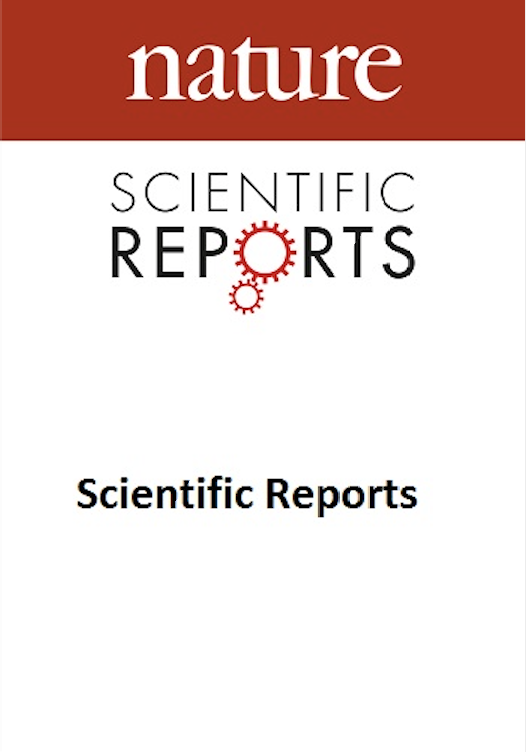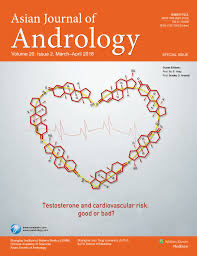Prostate Volume
How to submit an article:
- Registered users can submit any published journal article that has a unique DOI (Digital Object Identifier) name or link to Research Hub.
- For example, you can paste the full DOI link:
https://doi.org/10.1109/5.771073or just the DOI name:10.1109/5.771073into the field above and click submit. - The person who is first to submit a valid article to Research Hub will forever be credited for it, and every article submission earns you +6 Research Points.
Related Topics
Published research studies are articles that present the findings of original research that has undergone a peer-review process and has been made publicly available in scholarly journals, books or other media.

Relationship between serum total testosterone and prostate volume in aging men
2021 Jul 08 Scientific Reports Xia BW, Zhao SC, Chen ZP, Chen C, Liu TS, Yang F, et al.
Cohort Study Prostate Volume TestosteroneLower testosterone levels in aging men correlate with a larger prostate volume.

Efficacy and safety of Chinese herbal medicine for benign prostatic hyperplasia: systematic review of randomized controlled trials
2013 Jun 03 Asian Journal of Andrology Ma CH, Lin WL, Lui SL, Cai XY, Wong VT, Ziea E, et al.
Systematic ReviewChinese herbal medicine appears to be more effective than Western medication in improving quality of life and reducing prostate volume in benign prostatic hyperplasia patients.
Research insights are moderated by the Research Hub team and offer an at-a-glance overview of interesting research findings.

2021 Scientific Reports
Lower testosterone levels in aging men correlate with a larger prostate volume.
Cohort Study Testosterone
Relationship between serum total testosterone and prostate volume in aging men
Xia BW, Zhao SC, Chen ZP, Chen C, Liu TS, Yang F, et al.

2013 Asian Journal of Andrology
Chinese herbal medicine appears to be more effective than Western medication in improving quality of life and reducing prostate volume in benign prostatic hyperplasia patients.
Systematic Review
Efficacy and safety of Chinese herbal medicine for benign prostatic hyperplasia: systematic review of randomized controlled trials
Ma CH, Lin WL, Lui SL, Cai XY, Wong VT, Ziea E, et al.
Review Articles
Review articles summarise and critically evaluate the current state of research on a specific topic or field by synthesising multiple primary research studies.
Clinical Trials
Clinical trials are research studies that involve people and are conducted to evaluate the safety and efficacy of new treatments or interventions, such as drugs, medical devices, or behavioural therapies.
Study Protocols
Published study protocols are detailed plans that outline the objectives, methodology, statistical analyses, and organisation of a research study that have been made publicly available for others to review and use as a reference.
Presentation Slides

Cohort Study
Lower testosterone levels in aging men correlate with a larger prostate volume.
Xia BW, Zhao SC, Chen ZP, Chen C, Liu TS, Yang F, Yan Y

Systematic Review
Chinese herbal medicine appears to be more effective than Western medication in improving quality of life and reducing prostate volume in benign prostatic hyperplasia patients.
Ma CH, Lin WL, Lui SL, Cai XY, Wong VT, Ziea E, Zhang ZJ
Executive Summary
Write an executive summary in the form of a blog article on the topic of "Research into Chinese medicine treatment for Prostate Volume" summarising the research below and using language that can be easily understood by patients and avoiding medical jargon using a professional and caring tone of voice.
Write an executive summary in the form of a blog article on the topic of "Researched Chinese medicine treatments for Prostate Volume" summarising the research below in an objective and easy to understand way, and using language that can be easily understood by patients. Group the article into Chinese medicine treatments first, followed by nutrition and other treatments. Avoid using medical jargon and use a professional and caring tone of voice.
Write me a concise but easy to understand executive summary on the topic of "Chinese medicine treatments for Prostate Volume" based on the following research that I will give you. Your summary should be 2 paragraphs long in Australian English spelling and include references to the studies.
A Cohort Study published in 2021 in the journal Scientific Reports found that Lower testosterone levels in aging men correlate with a larger prostate volume. The study analysed the relationship between testosterone levels and prostate size in aging, overtly healthy males. Data was collected from 416 men who underwent routine health exams and these individuals were revisited after a span of four years. Variables not only included testosterone levels and prostate size, but also examined associated obesity-related factors such as waist circumference, body mass index, and insulin levels. The analysis focused on drawing correlations between various factors. Specifically, comparisons were made between men with lower testosterone levels and larger prostate sizes, and those with normal testosterone levels. Both initial prostate sizes and the change in size over the four-year period were evaluated in conjunction with testosterone levels. The role of testosterone levels was further intricately reviewed by adjusting for the age factor, to understand how this relationship may change over time. In investigating the results, it was observed that men with lower testosterone did tend to have significantly larger prostates, and higher levels of obesity-related factors compared to those with normal testosterone levels. It was also found that there was a negative correlation between testosterone levels and prostate size, that is, as testosterone increased, prostate size showed a substantial decreasing trend.
A Systematic Review published in 2013 in the journal Asian Journal of Andrology found that Chinese herbal medicine appears to be more effective than Western medication in improving quality of life and reducing prostate volume in benign prostatic hyperplasia patients. The method utilized in this research involved the systematic review of randomized controlled trials from diverse electronic databases. These trials were focused on comparing Chinese herbal medicine, in standalone or supplementary use with Western medication, against placebo or solely Western medication. All trials reviewed pertained to benign prostatic hyperplasia. Outcomes measured included changes in patients' urological symptoms, urodynamic measures, prostate volume and the occurrence of adverse events. The analysis revealed that Chinese herbal medicine was superior to Western medicines in terms of improving patients' quality of life as well as reducing the size of the prostate. Furthermore, the occurrence and frequency of adverse events in patients treated with Chinese herbal medicines were found to be similar to those observed in placebo groups and lesser compared to groups treated with Western medication. However, due to the limited number of trials and their methodological quality, the evidence supporting the efficacy of Chinese herbal medicine remains weak.
Moderation Tools
Topic
Sign In
Users not signed in are limited to viewing the 5 most recent items of content.